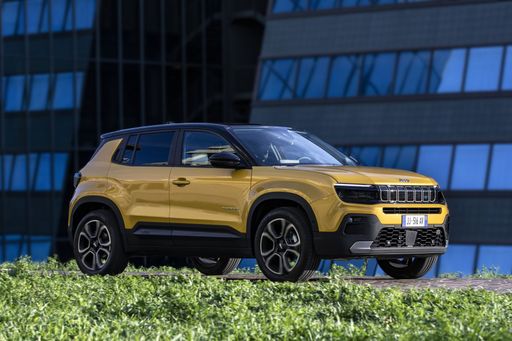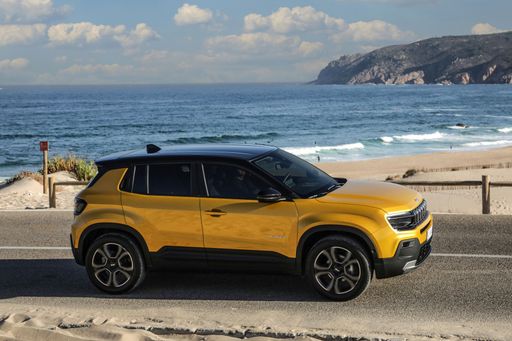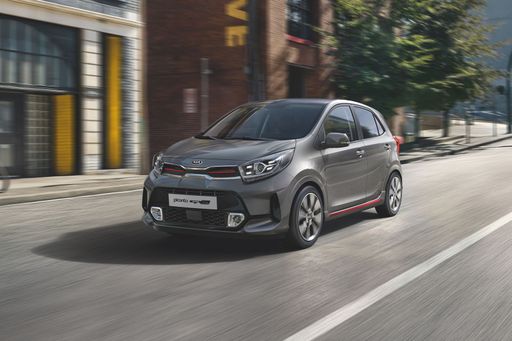Jeep Avenger vs Kia Picanto – Differences & prices compared
Costs and Efficiency:
Price and efficiency are key factors when choosing a car – and this is often where the real differences emerge.
Kia Picanto has a decisively advantage in terms of price – it starts at 15300 £, while the Jeep Avenger costs 21900 £. That’s a price difference of around 6642 £.
Fuel consumption also shows a difference: Jeep Avenger manages with 4.90 L and is therefore a bit more efficient than the Kia Picanto with 5.60 L. The difference is about 0.70 L per 100 km.
Engine and Performance:
Power, torque and acceleration say a lot about how a car feels on the road. This is where you see which model delivers more driving dynamics.
When it comes to engine power, the Jeep Avenger has a clearly edge – offering 156 HP compared to 68 HP. That’s roughly 88 HP more horsepower.
In acceleration from 0 to 100 km/h, the Jeep Avenger is decisively quicker – completing the sprint in 9 s, while the Kia Picanto takes 14.60 s. That’s about 5.60 s faster.
In terms of top speed, the Jeep Avenger performs a bit better – reaching 194 km/h, while the Kia Picanto tops out at 162 km/h. The difference is around 32 km/h.
There’s also a difference in torque: Jeep Avenger pulls clearly stronger with 260 Nm compared to 96 Nm. That’s about 164 Nm difference.
Space and Everyday Use:
Beyond pure performance, interior space and usability matter most in daily life. This is where you see which car is more practical and versatile.
Both vehicles offer seating for 5 people.
In curb weight, Kia Picanto is barely noticeable lighter – 1124 kg compared to 1180 kg. The difference is around 56 kg.
In terms of boot space, the Jeep Avenger offers noticeable more room – 380 L compared to 255 L. That’s a difference of about 125 L.
In maximum load capacity, the Jeep Avenger performs distinct better – up to 1277 L, which is about 267 L more than the Kia Picanto.
When it comes to payload, Jeep Avenger evident takes the win – 502 kg compared to 332 kg. That’s a difference of about 170 kg.
Who wins the race?
The Jeep Avenger proves to be leaves the rival little chance and therefore becomes our DriveDuel Champion!
Jeep Avenger is the better all-rounder in this comparison.
Costs and Consumption
View detailed analysis
Engine and Performance
View detailed analysis
Dimensions and Body
View detailed analysis
 @ Jeep / Stellantis Media
@ Jeep / Stellantis Media
Jeep Avenger
Jeep Avenger
The Jeep Avenger shrinks Jeep's boxy, adventurous styling into a city-friendly electric crossover that looks just as at home on tight streets as it does on muddy weekend lanes. It's a savvy pick for drivers who want go-anywhere attitude without the truck-size ego — practical inside, lively around town and ready to tackle a bit of rough stuff when the mood strikes.
details @ Jeep / Stellantis Media
@ Jeep / Stellantis Media
 @ Jeep / Stellantis Media
@ Jeep / Stellantis Media
 @ Jeep / Stellantis Media
@ Jeep / Stellantis Media
 @ Jeep / Stellantis Media
@ Jeep / Stellantis Media
 @ Jeep / Stellantis Media
@ Jeep / Stellantis Media
Kia Picanto
Kia Picanto is a cheeky city hatch that squeezes surprising style, practicality and a smile-inducing drive into a pocket-friendly package. It’s ideal for urban buyers who want fuss-free running, effortless parking and a car that punches above its class without pretending to be anything it’s not.
details @ Kia Corporation
@ Kia Corporation
 @ Kia Corporation
@ Kia Corporation
 @ Kia Corporation
@ Kia Corporation
 @ Kia Corporation
@ Kia Corporation
 @ Jeep / Stellantis Media
@ Jeep / Stellantis Media
|
 @ Kia Corporation
@ Kia Corporation
|
|
|
|
Costs and Consumption |
|
|---|---|
|
Price
21900 - 36900 £
|
Price
15300 - 19300 £
|
|
Consumption L/100km
4.9 - 5.7 L
|
Consumption L/100km
5.6 - 5.9 L
|
|
Consumption kWh/100km
15.50 kWh
|
Consumption kWh/100km
-
|
|
Electric Range
400 km
|
Electric Range
-
|
|
Battery Capacity
51 kWh
|
Battery Capacity
-
|
|
co2
0 - 129 g/km
|
co2
127 - 135 g/km
|
|
Fuel tank capacity
44 L
|
Fuel tank capacity
35 L
|
Dimensions and Body |
|
|---|---|
|
Body Type
SUV
|
Body Type
Hatchback
|
|
Seats
5
|
Seats
4 - 5
|
|
Doors
5
|
Doors
5
|
|
Curb weight
1180 - 1520 kg
|
Curb weight
1124 - 1131 kg
|
|
Trunk capacity
325 - 380 L
|
Trunk capacity
255 L
|
|
Length
4084 - 4088 mm
|
Length
3605 mm
|
|
Width
1776 mm
|
Width
1595 mm
|
|
Height
1527 - 1541 mm
|
Height
1485 mm
|
|
Max trunk capacity
1218 - 1277 L
|
Max trunk capacity
1010 L
|
|
Payload
494 - 502 kg
|
Payload
253 - 332 kg
|
Engine and Performance |
|
|---|---|
|
Engine Type
Electric, Petrol, Petrol MHEV
|
Engine Type
Petrol
|
|
Transmission
Automatic, Manuel
|
Transmission
Manuel, Automatic
|
|
Transmission Detail
Reduction Gearbox, Manual Gearbox, Dual-Clutch Automatic
|
Transmission Detail
Manual Gearbox, Automated Manual
|
|
Drive Type
Front-Wheel Drive, All-Wheel Drive
|
Drive Type
Front-Wheel Drive
|
|
Power HP
100 - 156 HP
|
Power HP
68 HP
|
|
Acceleration 0-100km/h
9 - 10.6 s
|
Acceleration 0-100km/h
14.6 - 17.2 s
|
|
Max Speed
150 - 194 km/h
|
Max Speed
160 - 162 km/h
|
|
Torque
205 - 260 Nm
|
Torque
96 Nm
|
|
Number of Cylinders
3
|
Number of Cylinders
3
|
|
Power kW
74 - 115 kW
|
Power kW
50 kW
|
|
Engine capacity
1199 cm3
|
Engine capacity
998 cm3
|
General |
|
|---|---|
|
Model Year
2023 - 2025
|
Model Year
2025
|
|
CO2 Efficiency Class
A, D, C
|
CO2 Efficiency Class
D
|
|
Brand
Jeep
|
Brand
Kia
|
What drivetrain options does the Jeep Avenger have?
Available configurations include Front-Wheel Drive or All-Wheel Drive.
The prices and data displayed are estimates based on German list prices and may vary by country. This information is not legally binding.
